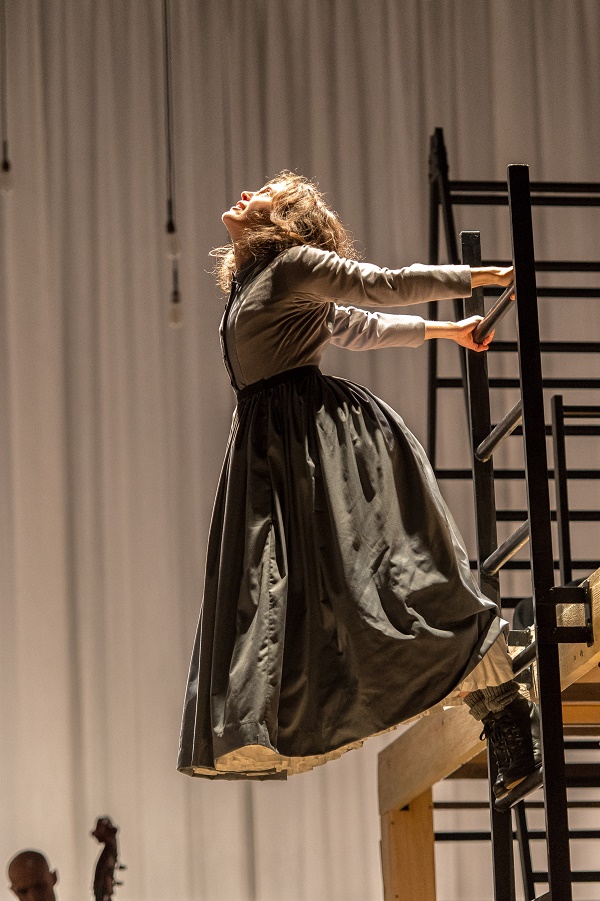I am writing this in the sun after many days on the trot spent from morning until 11 at night in Jane Eyre’s wonderful new home at the National Theatre. During previews we work every day, refining, changing, have a quick dinner break and then perform a preview performance. It’s the culmination of over two years of living with this story, since Sally Cookson first contacted me in late spring 2013 to discuss her plan to turn this extraordinary book into a piece of theatre.
Previously I had worked with Sally on Peter Pan and, without that experience, getting to know her collaborative but very demanding way of working, I’m not sure I could have done this. Devising as a term is much bandied about, and can summon up terrifying images of undisciplined, amorphous “interpretative dance” performance, as we like to joke: every time we got stuck in rehearsals, we would break into some strange shape-throwing to dispel the tension.
 But at its best, in the hands of a rigorous, visionary director, with the support of an incisive dramaturg (Mike Akers) to keep you on track with story, and a company at ease with the challenges of both improvising to find the heart of a scene, but also with writing dialogue and finding ways of giving theatrical physical life to characters, it is the most rewarding way of making theatre I know. It’s also the kind of theatre I most enjoy watching, though of course a play by a brilliant playwright is equally wonderful – it’s not a competition; the two kinds of theatre can complement each other and we’re lucky in this country to have access to so much variation and diversity.
But at its best, in the hands of a rigorous, visionary director, with the support of an incisive dramaturg (Mike Akers) to keep you on track with story, and a company at ease with the challenges of both improvising to find the heart of a scene, but also with writing dialogue and finding ways of giving theatrical physical life to characters, it is the most rewarding way of making theatre I know. It’s also the kind of theatre I most enjoy watching, though of course a play by a brilliant playwright is equally wonderful – it’s not a competition; the two kinds of theatre can complement each other and we’re lucky in this country to have access to so much variation and diversity.
Jane Eyre is one of those books of which people feel intensely possessive. The immediacy of its rage, disappointment, pain, loss, joy, uncertainty – the enduring power of the “poor orphan child” (Harry Potter anyone?!) – catches at its readers’ hearts. And we knew it was imperative that we told our version of the story, singularly and with total commitment, hoping to distil in some way the essence of Charlotte Brontë’s extraordinary creation while nevertheless making it something new. A piece of theatre should never attempt to be a straight “adaptation” of a book. You can’t simply fill the stage with dialogue – and, believe me, it was a monstrous task to decide which bits to keep, Brontë’s dialogue is so extraordinary – and turn it into a series of “scenes”. You may as well stay at home in front of a good fire and re-read the book itself.
No, we knew that our approach would be to make it intrinsically theatrical. Sally works with Benji Bower, our composer and MD, a lot, and together they have a symbiotic understanding of the emotional and dramatic world they wish to create; at times it feels operatic in its scope, but as ever Benji brings wit and surprise to his use of music. There is plenty an audience might not expect when they hear the words “Jane Eyre”. It is a thrilling, terrifying process, taking a story you’ve loved since you were a child (I too, dear reader, am one of those passionate fans of the book), ripping it apart to find its theatrical essence, and then daring to play it on the stage. We do it with love and passion for Charlotte Brontë’s original, extraordinary conception. Fingers crossed.
- Jane Eyre is in rep at the National Theatre until 10 January 2016















Add comment